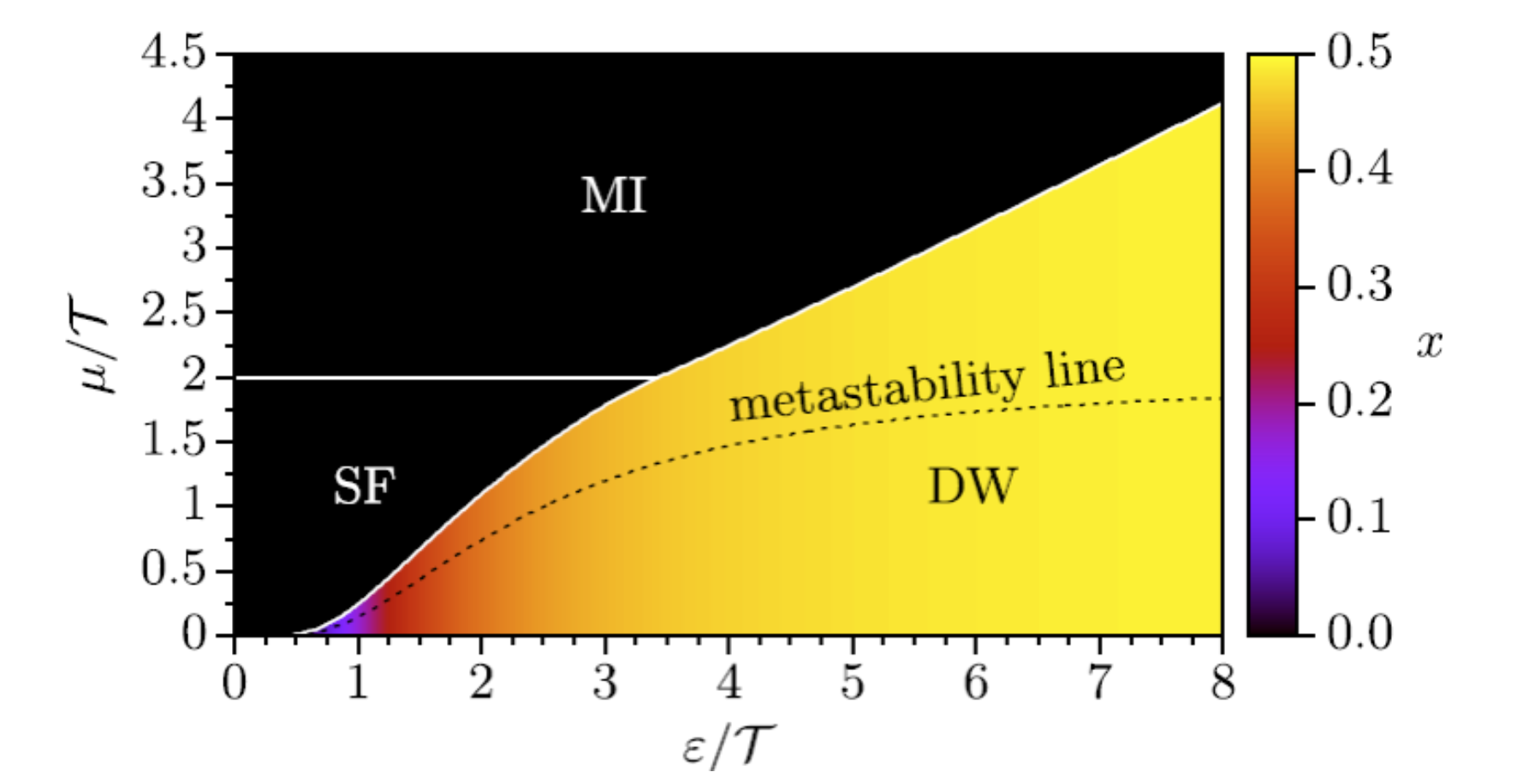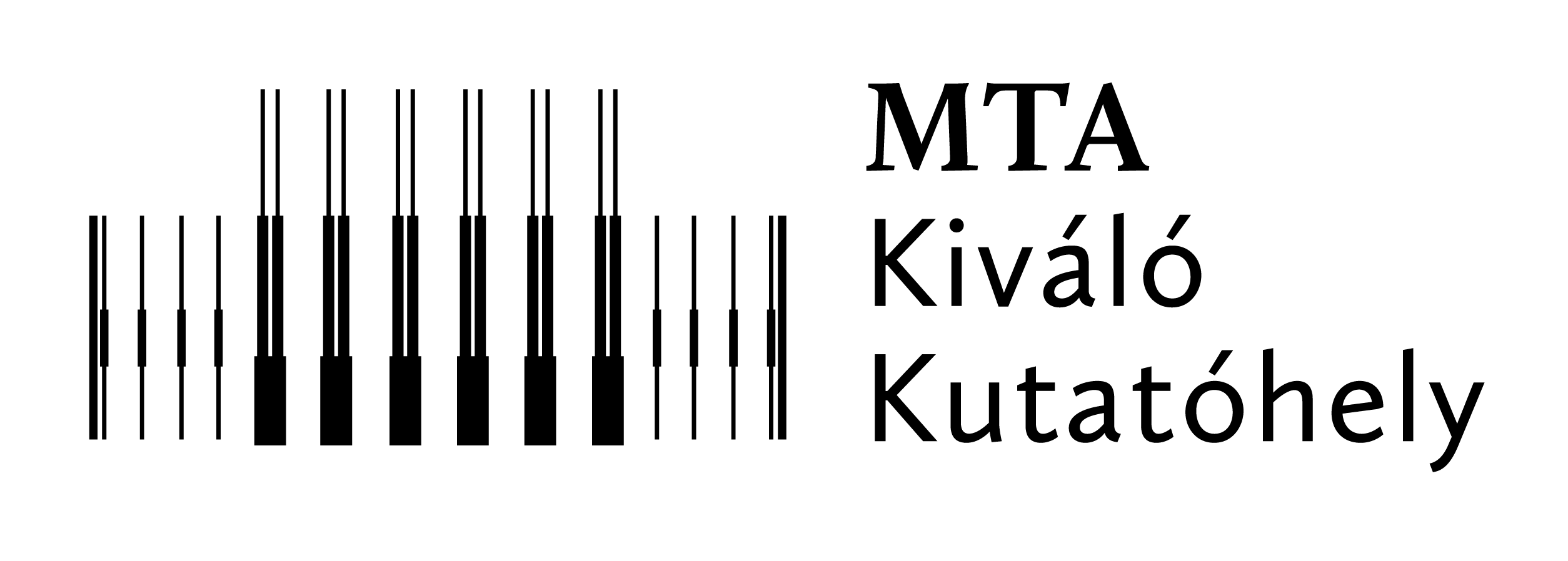2017
The research activity of Complex Systems research group in 2017 covered various topics in the field of cooperative behavior, phase transitions and nonequilibrium dynamics of systems with many degrees of freedom.
Entanglement entropy of composite quantum spin chains. — The entanglement entropy in clean, as well as in random critical quantum spin chains is well known to have a logarithmic scaling with the size of the subsystem. We considered a composite, antiferromagnetic XX chain that consists of a clean and a random part, and found a double-logarithmic scaling of the half-chain entanglement entropy: S∼lnln(L). We also considered the case, when the disorder penetrates into the homogeneous part in such a way that its strength decays with the distance l as ∼l−κ. For κ<1/2, the entropy scales logarithmically with a modified prefactor as S(κ)≃(1−2κ)S(κ=0), while for κ≥1/2, we recover the double-logarithmic scaling. These results were explained by strong-disorder RG arguments. We also studied the half-chain entanglement entropy across a symmetric, extended random defect, where the strength of disorder decays algebraically on both sides of the interface. In the whole regime κ≥0, we found a logarithmic scaling of the entropy, but the variation of the prefactor with κ is non-monotonic and discontinuous at κ=1/2.
Quantum relaxation of lattice bosons with cavity-induced interactions. —The coupling of cold atoms to the radiation field within a high-finesse optical resonator induces long-range interactions which can compete with an underlying optical lattice. The interplay between short- and long-range interactions gives rise to new phases of matter including supersolidity (SS) and density waves (DW). We have shown that for hard-core bosons in one dimension, the ground-state phase diagram (see Fig. 1) and the quantum relaxation after sudden quenches can be calculated exactly in the thermodynamic limit. Remanent DW order is observed for quenches from a DW ground state into the superfluid (SF) phase below a dynamical transition line. After sufficiently strong SF to DW quenches beyond a static metastability line, DW order emerges on top of remanent SF order, giving rise to a dynamically generated supersolid state.
Proof of phase transition in homogeneous systems of interacting bosons. — Using the rigorous path integral formalism of Feynman and Kac, we proved London's eighty-year-old conjecture that during the superfluid transition in liquid helium, Bose-Einstein condensation (BEC) takes place. The result is obtained by proving first that, at low enough temperatures, macroscopic permutation cycles appear in the system, and then showing that this implies BEC. We found also that, in the limit of zero temperature, the infinite cycles cover the whole system, while BEC remains partial. Via the equivalence of 1/2 spins and hard-core bosons the method extends to lattice models. We showed that, at low enough temperatures, the spin-1/2 axially anisotropic Heisenberg models, including the isotropic ferro- and antiferromagnet and the XY model, undergo magnetic ordering.

Figure 1. Phase diagram of the Bose-Hubbard model with cavity-induced infinite-range interactions. T, μ, ε, and x denote the tunneling constant, the chemical potential, the strength of cavity-induced interactions, and the density-wave order parameter (imbalance), respectively. MI, SF, and DW stand for Mott insulator, superfluid, and density wave, respectively.
Critical behavior of the contact process near an extended defect. — The contact process is a simple stochastic lattice model of epidemic spreading. We considered its inhomogeneous variant, where the deviation of the local control parameter from the bulk value tends to zero with the distance from the surface as λ(l)−λ(∞)=Al−s. In the marginal case, s=1/ν⊥, where ν⊥ is the correlation-length critical exponent, Monte Carlo simulations show a rich surface critical behavior. For weaker perturbations, A<Ac, the transition is continuous and the order-parameter critical exponent varies continuously with A. For A>Ac, the phase transition is of mixed order: the order parameter is discontinuous but, at the same time, the temporal correlation length diverges, with different exponents on the two sides of the transition. This behavior in the mixed-order regime was explained in the frame of a scaling theory.



